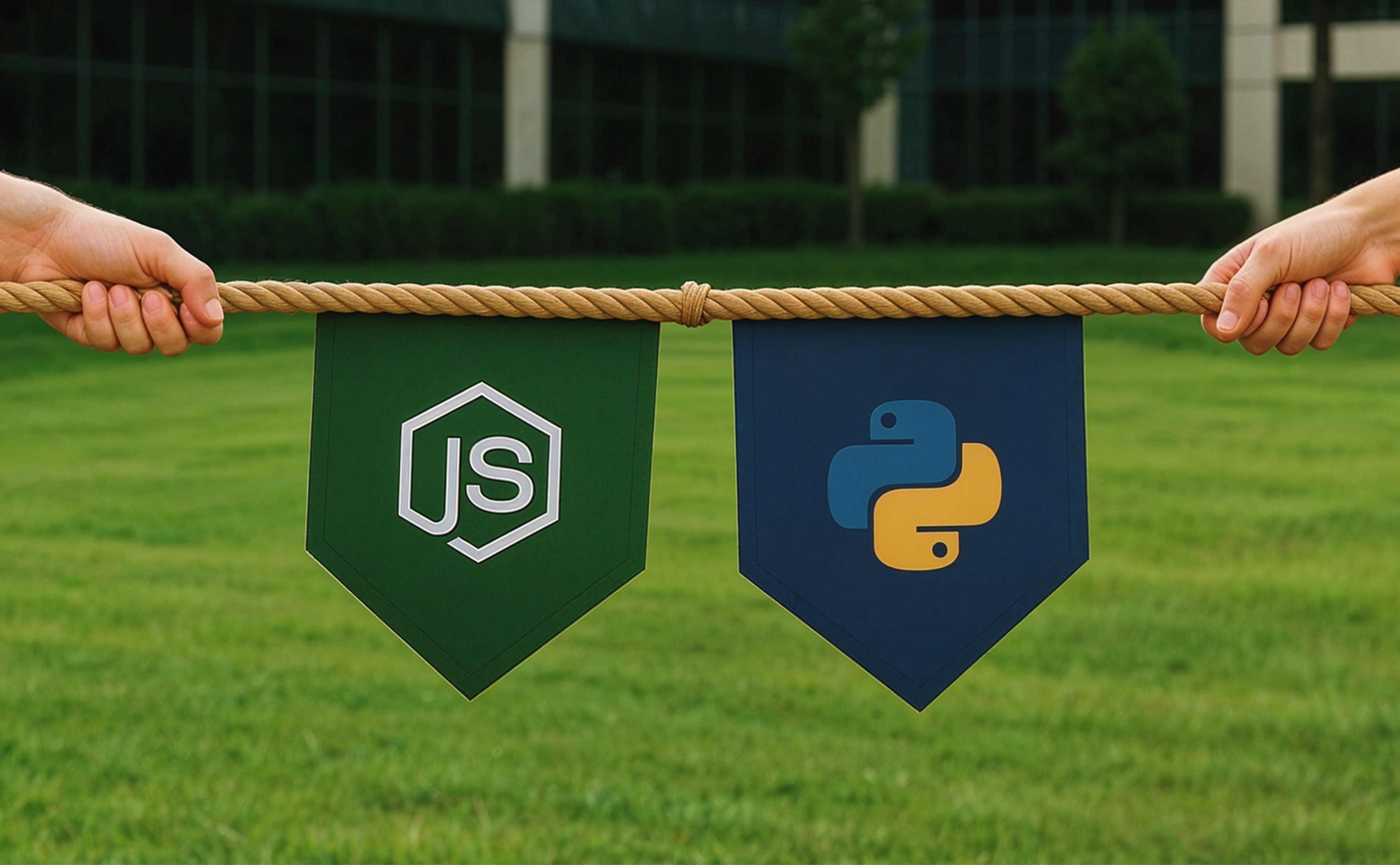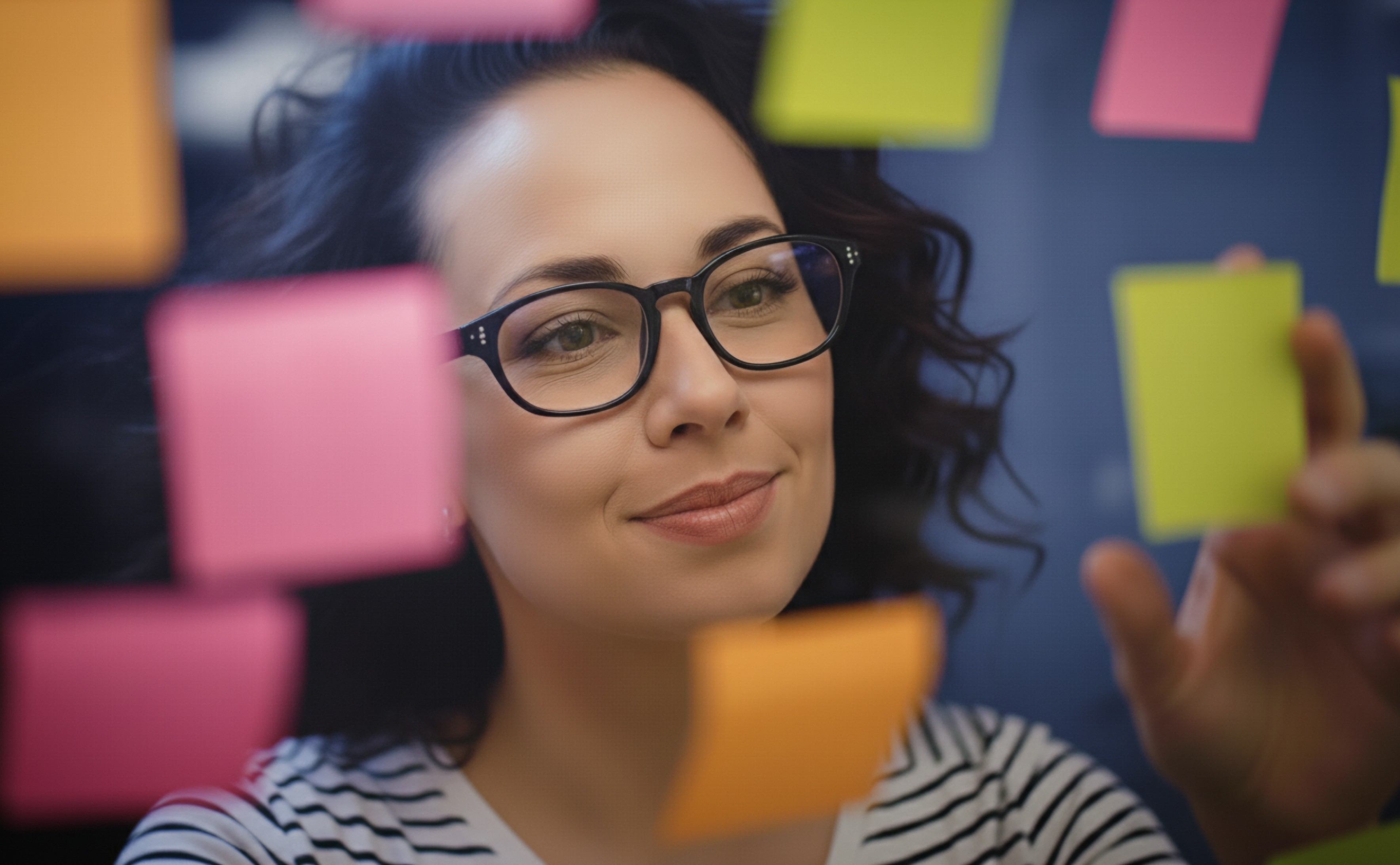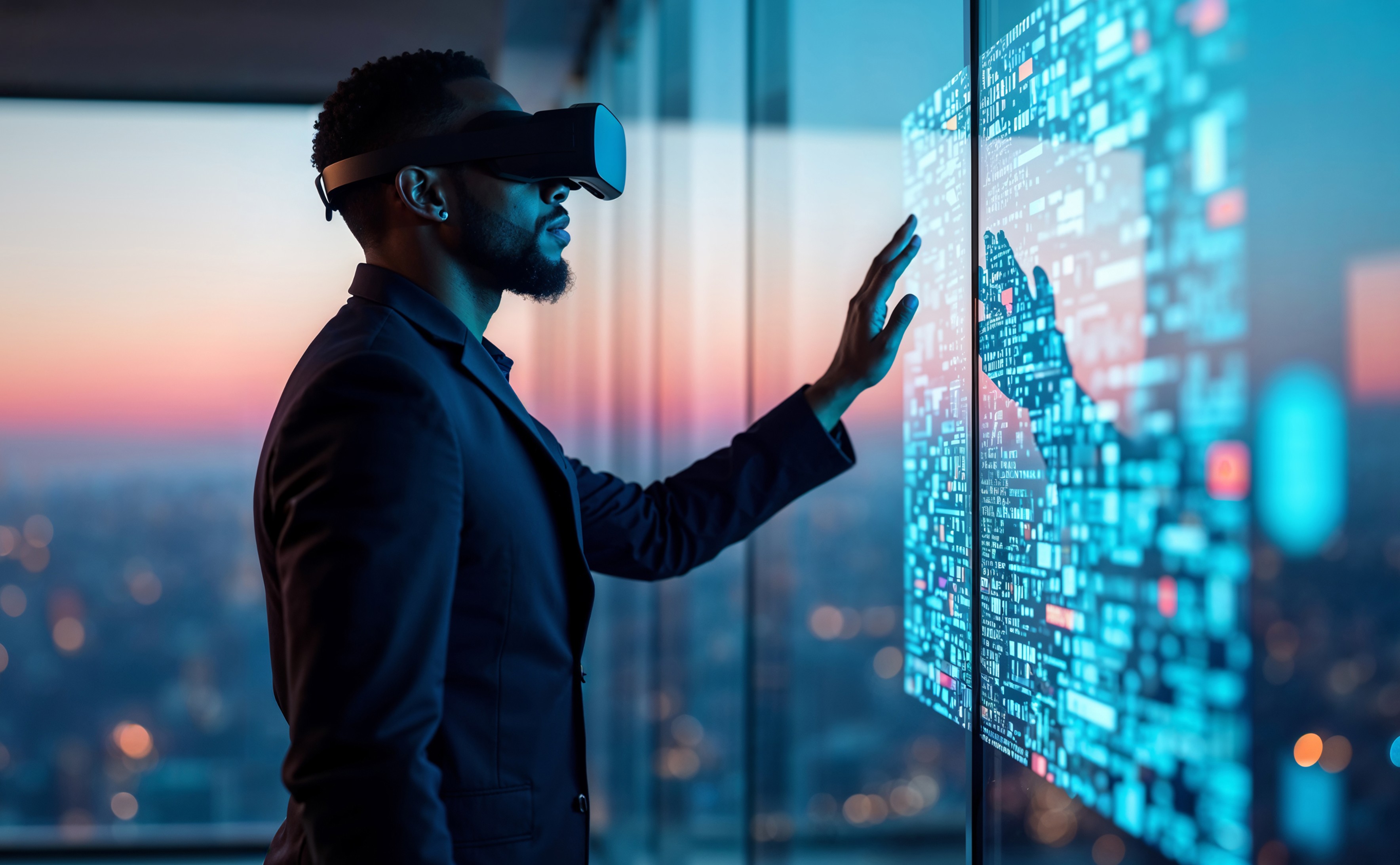Virtual Shopping: Transforming E-commerce Storefronts

Modern e-commerce is still progressing with the evolution of technology and market trends. Clear boundaries exist between conventional retail and online shopping experiences. As consumers are more aware, they expect a seamless journey across the two spaces, with an increased overlap between traditional and modern retail models. For instance, with the surge of customers comes the necessity of integrating technology in traditional retail and the fulfillment of in-store experiences in online transactions.
In 2023, there were 259 million online shoppers in the U.S. This is estimated to hit 333.5 million online shoppers by 2025. Even in offline stores, consumers check ratings and reviews online before deciding on a purchase. The difference in consumer preferences has made it ideal for retailers to decide on a new ecosystem.
Retailers are now working on creating virtual shopping experiences in online stores to offer a customized in-store-like online experience. This blog will analyze how online purchasing shakes the retail environment and how virtual shopping revolutionizes e-commerce storefronts.
What Is Virtual Shopping?
It is projected that by 2025, there will be 2.77 billion online shoppers worldwide. Virtual shopping offers an immersive buying experience that mimics the physical store. Utilizing top-notch technologies like AR (Augmented Reality) and VR (Virtual Reality), businesses can create virtual environments where customers can interact with the products and complete purchases successfully.
Virtual shopping is an e-commerce service that lets customers browse and buy items online like they usually do in-store. It is all about utilizing technology to incorporate the human element in e-commerce. This is achieved through virtual shopping channels like video chat, chat, and co-browsing.
These virtual channels are run by contact center agents or customer support representatives, working remotely or in-store. They let retailers provide a seamless experience and create human connection–whether they serve customers online or in person.
Virtual Shoppers: A Rising E-commerce Trend
Video and virtual shopping have been popular for many years. However, the COVID-19 pandemic played a crucial role in taking virtual storefronts to the mainstream. For instance, 75% of UK customers admitted to purchasing more online between March 2020 and February 2021.
However, even with lockdowns aside and during the phase of the pandemic, shoppers across the globe were more likely to prevent public spaces. More customers were using their desktops and mobile devices instead of going to the physical store.
Retailers started taking advantage of increasing online sessions as store-foot traffic saw a downfall. E-commerce websites can now instantly connect a virtual shopper with many smart communication channels and website engagement tools.
What Is Clienteling in Retail and What Does It Mean?
When you or your store associates interact with buyers to offer a personalized experience, it is known as clienteling. Virtual clienteling lets you offer customers the one-on-one online experience they wish for in-store.
With customer service, store associates might passively offer customers who reach out to you when they require support. On the contrary, you and your sales staff can utilize clienteling tools to engage with the buyers proactively as they navigate your online stores, providing the level of personalized service shoppers expect in-store, either through video calls or chats.
Virtual clienteling is switching the store associate’s role. Forget the days when their major responsibility is greeting buyers in-store, selling products in person, etc. Everything has turned omnichannel now!
Virtual shopping and clienteling applications let store associates transform into service providers who can proactively engage with buyers online to earn commissions for sales on every channel.
It helps to keep retail experts employed since the retail ecosystem continues to boost employee satisfaction as virtual clientele lets sales associates work from home flexibly.
Types of Virtual Shopping Experiences
1. Virtual Try-On:
How cool would it be to try on stuff without actually touching it? With AR or VR, you can observe how the glasses or clothes look on you before purchase. Rayban is one such example. It works based on AR visualization and you can use its Virtual Mirror feature that lets users try on different sunglasses and eyeglasses through its app or website with the device’s camera.
2. Virtual Try-Out:
It is similar to taking the store to your living room. Using virtual tryouts, you can take virtual furniture to try in your space and see if it fits in—for instance, the ‘IKEA Place’ app.
3. 3D Webstores:
How does online shopping work when it is 3D? The 3D webstores give life to the products with fancy visuals and 3D images. It lets you feel like you’re just there in the store. For instance, Zomato makes daily orders super-interesting with 3D models of food items in the form of AR data visualization.
4. Virtual Reality Store:
VR stores give you a new experience, where you can browse and purchase without leaving your house.
5. Visual Search:
Bid farewell to typing the search terms. Using visual search, you can search products with images rather than words. Walmart has a Scan & Shop feature that allows you to scan product barcodes or upload images to find products available in-store or online.
6. Video Interactions:
Do you wish to add a human touch to your online shopping experience? Video interactions help you chat with experts and earn personalized assistance just like you receive in-store. Amazon stores use explainer videos describing the products and showing how to use video interactions in virtual storefronts.
7. 360-Degree Product View:
The 360-degree view is a booming concept in many e-commerce stores. With a complete view, you can check the products across each angle before you press the buy button. Amazon has a 360-degree view option that lets you be closer and personal with your purchase. These virtual store experiences make your shopping highly convenient and full of fun!
10 Benefits of Virtual Shopping
1. Connect with Customers in a Way Retail Giants Can’t
Virtual commerce builds personalized experiences, enhanced customer support, and immersive buying, eliminating the drawbacks of conventional retail. By utilizing technologies like AR and VR, brands can build engaging online experiences that create deep-rooted connections with customers.
Virtual commerce platforms help you with custom product recommendations and virtual try-on technologies, thereby paving the way for a refined shopping journey. Virtual commerce travels beyond geographical barriers, enabling businesses to hit customers across the globe and serve different preferences.
2. Creating an Omnichannel Shopping Experience
Virtual commerce offers a seamless integration between offline and online channels. This is gained through features like inventory synchronization that ensures consistency in product availability across every channel, click and connect for customers to order online and pick up purchases in-store conveniently, and virtual try-ons for customers to try on products virtually before purchase.
3. Increased Customer Engagement
Virtual shopping offers an appealing experience by offering an engaging and highly interactive platform. Customers can be focused on a digital ecosystem, and interact with products to make decisions with superior presence. This interaction results in high-end brand loyalty and valued shopping experiences.
4. Minimized Return Rates
As a customer, virtual shopping lets you try before you buy. Virtual try-on features supported by technologies such as AR, VR, etc. minimize the possibility of returns. This not only triggers customer satisfaction but also lets your brand get rid of logistical challenges and expenses associated with the returns.
5. Improves Sales
Unlike usual e-commerce stores, websites, and apps, an immersive experience can make shopping highly engaging. By using AR in virtual shopping, people can interact longer with the products with powerful sales channels at the shopper’s comfort. People can realize how a product best fits into their lives, which persuades them in many ways to arrive at a buying decision during that online session. An increased buying experience means high sales growth opportunities.
6. Personalized Buying Experience
Personalization is inevitable in e-commerce, as it lets businesses cater to the needs and preferences of customers. Personalization can be taken to heights by using AI algorithms and data analytics to build custom shopping experiences. By monitoring user preferences and behavior within the virtual environment, e-commerce businesses can provide discounts, promote product recommendations, and offer real-time personalized support. This personalization level not only elevates the purchase experience but also boosts customer loyalty and conversion rates.
7. Cost-Efficient Product Display
Conventional retail often has associated significant costs for the physical product displays, store layouts, and maintenance. With virtual shopping, you can get rid of many of these costs, offering businesses an affordable way to portray the products in a highly appealing and personalized virtual environment. Virtual shopping is a strategic move that ties businesses with the growing expectations and requirements of modern buyers.
8. Accessibility and Inclusivity
Metaverse has the capability of breaking down barriers and making e-commerce highly inclusive. Virtual environments can be designed to involve users with disabilities, offering them the right access to products and services. Additionally, the metaverse goes beyond geographical barriers to hit customers around the globe. This finds new markets and opportunities to scale, helping businesses to expand their reach and grow revenue.
9. Augments Physical Retail Stores
Virtual storefronts give a glimpse of what you can expect at a retail store, evoking more real-time visits. Improving in-store visits as virtual assistants also augments both offline and online locations. Your physical presence doesn’t have to compete with the e-commerce store. Instead, these can complement each other for a fantastic customer experience.
10. Opportunity to Collect More Customer Data
Virtual shopping includes a suite of analytics that lets retailers get real-time insights about customer behavior patterns to augment decision-making. By analyzing the website interactions, businesses can track what products visitors view and find the products they add to shopping carts. They can also spot missing links, which cause conversions to underperform. For instance, in a 3D environment, retailers can see how customers respond to their merchandising efforts in a way they can’t simply measure offline.
Examples of Virtual Shopping
Gucci Live
Gucci Live is an exclusive video purchase service housed in Florence, Italy. Customers can connect live to see the latest designer piece or can request appointments for upcoming dates. Customers aren’t on video in the live styling sessions of Gucci; instead, they will directly have a window to the Gucci store.
Nike
The virtual retail store of Nike, called Nikeland, was launched on Roblox by the end of 2021, offering a stunning brand experience that transcends beyond usual shopping. In Nikeland, users can browse through products, navigate, and engage in interactive sessions like sports games. This confirms the VR’s capability to turn shopping into a highly engaging experience that combines fun and purchase.
Burberry
Burberry began creating interactive replicas of its flagship store based in Tokyo virtually in 2021. This virtual store gave an immersive purchase experience to the international audience, enabling them to purchase items from the Spring/Summer collection. The brand also integrated touchpoints all along the virtual shop.
Amazon
Amazon has a “view in your room” feature, allowing users to virtually replace various furniture objects in a room with their mobile camera. Significant advancements lie in its capability to overlay the quality-specific images of multiple objects, offering a highly comprehensive view of how multiple pieces can look together in a unified space.
How to Add Virtual Shopping to Your E-commerce Website or App?
1. Identify the Right Virtual Shopping Experience for the Audience
A hardware shop and an online fashion retailer don’t work the same. Choosing the appropriate virtual shopping technologies involves many steps. You should consider factors like target audience, customer needs, and company characteristics. The options to implement virtual technology in your e-commerce website or app include:
- VR fitting rooms
- VR showrooms
- VR games and applications
- 3D product models
- Product replacement
- Virtual stores
2. Integration with Existing E-commerce Platforms
Virtual shopping can smoothly integrate with e-commerce platforms like WooCommerce, Magento, and Shopify, offering a highly immersive online shopping experience. Zara, the well-known clothing store, had adopted virtual try-on technology integration to its Shopify store. It lets customers see how different the clothing items would fit them before the actual purchase, minimizing the returns and enhancing the customer experience.
3. Enhancing Customer Interaction with Live and Interactive Tools
The live and interactive experience can scale customer engagement and offer a highly personalized purchase experience. By adding elements like virtual try-ons and various interactive tools, businesses can let customers interact with products most engagingly. Interactive features have the following benefits:
- Improved customer engagement: With interactive features, you can let customers spend more time on the website or the application.
- High-end product visualization: Virtual try-ons and 3D product models let customers have a better understanding of fit, size, and product appearance.
- Minimized returns: By offering a highly accurate product representation, interactive features minimize the number of returns.
- Top-notch customer satisfaction: A custom and engaging shopping experience can increase customer satisfaction and loyalty.
4. Optimizing User Experience
A user-specific virtual shopping experience is necessary to attract and retain customers. By emphasizing quick loading times, accessibility, and intuitive navigation, brands can build engaging and positive online shopping environments. The following factors contribute to an optimized user experience:
- Quick loading times: Reduced loading times can cause customer frustration and cause cart abandonment. Optimizing website or application performance is important to keep users engaged.
- Intuitive Navigation: It helps customers find what they search for easily and quickly.
- Accessibility: Making sure that the virtual purchase experience is accessible to every user, ranging from those having disabilities, for compliance with the accessibility standards.
- Mobile Optimization: Given the rising use of mobile devices for purchase, it is essential to optimize the virtual shopping experience for touch-specific interactions and smaller screens.
A core example is Amazon, whose website is popular for its rapid loading times, seamless checkout, and intuitive navigation. Nevertheless, Amazon has spent heavily on accessibility, which ensures the platform’s usability for all customers.
Conclusion
Virtual shopping has been hailed as retail’s future, bringing more human approaches to offline and online interactions. Since they can shop from home and still earn the services similar to those at a store, making the process simpler. In addition, it enables the effortless shift of in-store customers to an online environment for an easier buying experience.
Curious about implementing the latest trends and technologies in your e-commerce store? With the help of a top ecommerce development agency, you can create a multidimensional shopping experience and enhance customer interactions for improved sales.
At Webandcrafts, we offer innovative virtual shopping platforms custom-tailored to fit your requirements. With immersive storefronts and improved customer engagement, our team incorporates seamless features for your e-commerce store, providing a seamless ordering experience. To learn more about the ecommerce website design services we offer, let’s talk!
Excited to integrate virtual shopping into your e-commerce platform?
Reach out usLoading...
- E-Commerce Statistics 2026: Key Trends, Growth Insights & Global Shopping Behavior
- Top Gen Z Shopping Trends Shaping eCommerce in 2026
- Adobe Commerce vs Commercetools: Choosing the Right eCommerce Platform for Scalable Success
- Composable Commerce in 2026: A Mainstream Solution for the Future of Retail
- E-commerce Trends That Are Powering Online Retail Forward In 2026
Discover Digital Transformation
Please feel free to share your thoughts and we can discuss it over a cup of tea.









